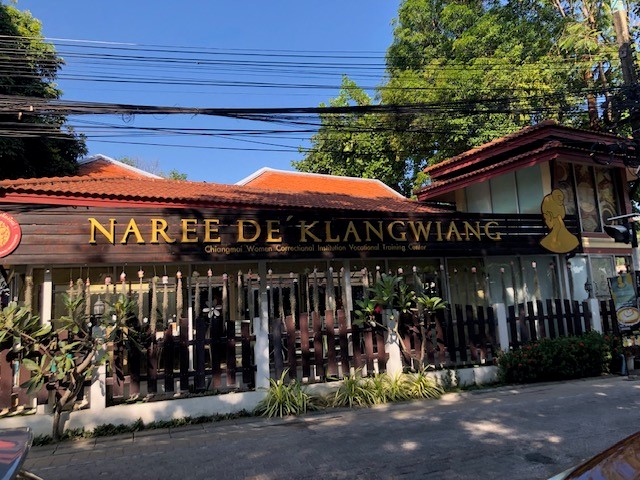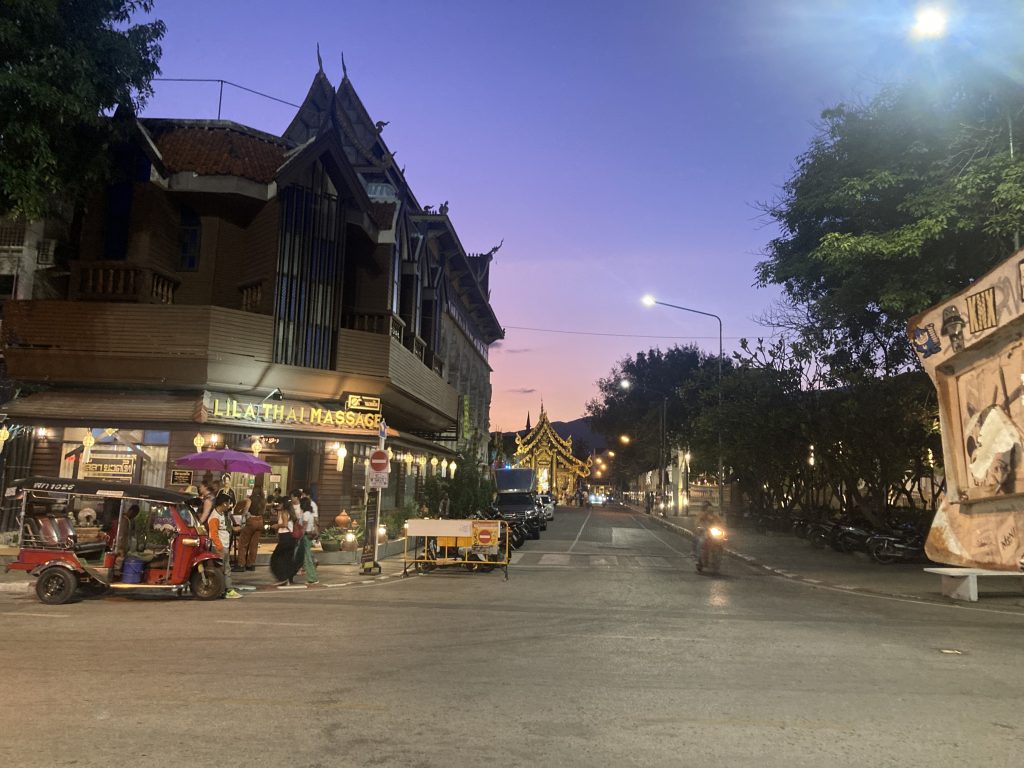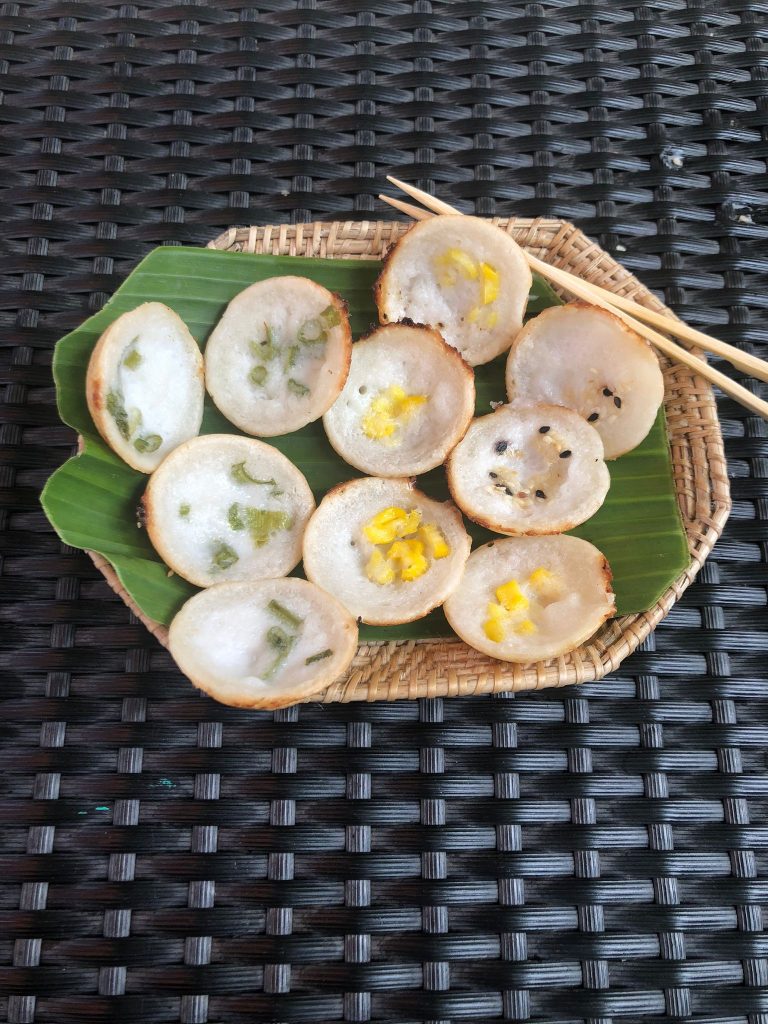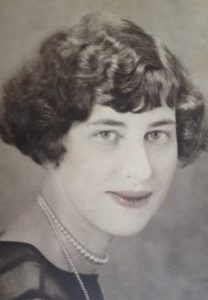
Chiang Mai, the largest city in Northern Thailand was established in 1296 as the capital of the Lanna Kingdom. The Three Kings sculpture in the historical centre is a landmark monument and tribute to the founding fathers of the city but it was not exactly a peaceful start. The Kingdom came under repeated attack from Burma (now Myanmar) to the north and Siam in the south for several centuries. The ancient city walls and moat speak to this long struggle. In 1557 the Burmese were victorious and ruled for 200 years until the Lanna King joined forces with Siam to finally drive the Burmese out. The Kingdom’s territory was subsequently greatly reduced and incorporated into Siam in 1892. Chiang Mai and the surrounding area was eventually made a province of the country, renamed as Thailand in 1949.
In this culture members of the Royal family, past and present are universally revered by their subjects and cultural etiquette around the Monarchy is strictly observed. For example, it is a criminal offence to speak disrespectfully of the Royal family or to be perceived to be abusing their images by licking stamps in public or stepping on a dropped coin in the street. Whenever I think of Siam, it is the depiction by Yul Brynner of the fierce King Mongkut in Rogers and Hammerstein’s musical The King and I that springs to mind. Not surprising then that this material, based on the memoirs of Anna Leonowens, governess to the King’s children in the 1860s remains deeply insulting and is banned in Thailand.

While the Royals may be worshipped they are not as remote from ordinary people’s struggles as you might think. HM Princess Bajrakitiyabha Mahidol has spearheaded an inspirational prisoner rehabilitation programme in Chiang Mai that is changing women’s lives for the better. The female prison population went up by 50% between 2006 and 2012 with money laundering and drug-related crime the main offences. In many cases debt, driven by poverty played a part. With the stigma of a prison sentence affecting future job prospects a cycle of reoffending was inevitable. To counter this, a day release programme for the inmates of Chiang Mai’s Women’s Correctional Institution allows them to train and practice in the massage and catering industries during the day and return to prison at night until their sentence is served. The skills they acquire means they have a direct route to employment on release and can forge a new and better path in life. It’s a virtuous circle that tourists can and do support and it’s brilliant.
Once we learned about the concept we were regulars at the outdoor coffee shop and restaurant, adjacent to the women’s prison. Massage services were so popular there that I couldn’t get an appointment at this outlet but another one nearby, run by former inmates obliged. My feet were grateful.

It’s hard to believe that these charming, young women have done anything criminal as they bring you coffee, prepare delicately flavoured coconut pancakes or knead your aching muscles with tiger balm. Respectful behaviour is deeply ingrained in Thai culture and for visitors this is apparent in the traditional greeting, experienced many times a day on entering shops, restaurants and hotels – palms pressed together, fingertips level with the nose, a slight bow of the head, a smile and a softy spoken Sawadee kha. No wonder Thailand is known as the land of smiles.
Always hungry
The Thais love their street food and snacks are available on every corner, from individual sellers with rickety little stalls to open shop fronts. When the heat is on, chunks of fresh mango, pineapple, dragon fruit, some with white flesh and black seeds, another variety, leaking beetroot-red juice hits the spot. To start the day, crunchy guava, sweet papaya, and thirst-quenching watermelon were always available during our visit in November. More filling and completely delicious were the little parcels of sweet potato or banana, wrapped in banana leaves and grilled till soft and sweet.

A particular favourite are Kanom Krok – tiny hemi-spherical coconut pancakes, briefly mentioned above. These are cooked in a special pan to create individual crispy shells with a sweet custard-like centre. Finished with more coconut, tiny pieces of corn or green onion, these are a moreish blend of sweet and savoury.

One of our first restaurant experiences was at Paak Dang, a gorgeous teak building and riverside setting providing employment and hospitality training for vulnerable young people. Miang Kham Goong another popular Thai snack was on their list of starters, but I needed a bit of coaching on how to eat it. Many years ago, in Singapore I was served a dish of steamed chicken, wrapped in a pyramid of bamboo leaves. In my ignorance I assumed it was all edible. To a panda, it probably is, but luckily the waitress put me straight before I did myself an injury. The memory of that blunder has never left me, so I tend to approach food wrapped in leaves with trepidation.
Our grilled fresh prawns arrived wrapped in betel leaves, beautifully arranged in a row of shot glasses. I’m glad we were advised to eat the whole thing before I deconstructed it. As well as a burst of ginger, lime and shallots, our juicy sweet prawns were bathed in a toasted coconut dressing, and the betel leaves holding it all together added a fresh crunch of green goodness.
We stumbled across Lemongrass restaurant, tucked away on a back street. Not at all fancy but here we shared a very fine whole steamed fish, with fried rice piled high into half a pineapple, flecked with tiny pieces of the fruit, peanut crumbs, and red pepper for colour. The fish, served on a platter of banana leaves had been cleverly boned and portioned in great white flakes for the table, but somehow retained its original shape.

Chiang Mai’s Finest Dish
Before we flew to Chiang Mai we did some research on the typical dishes found in Northern Thailand. We’d heard that the red and green curries that we know and love are particular to the south and that Chiang Mai has its own specialities. It doesn’t matter where you go in the world you can be sure that someone has been there, checked it all out and stuck a video on the internet for your reference. There’s a guy on YouTube that travels everywhere, eats everything, and is universally impressed by it all. Given his consistent enthusiasm it is easy to identify the foods that don’t align with your tastes and more importantly the dishes that make your mouth water in anticipation. The videos he offers on eating in Chiang Mai are typical of his informative style. The dubious looking pork sausage dipped in chilli paste he consumes with obvious relish and the obligatory ‘wow’ at first bite, is not a combination I find at all tempting. This is Sai Ua and was one of many dishes available at our hotel for breakfast. I tried a tiny sample. It’s seriously hard core.
Khao Soi, on the other hand is a crowd pleaser and as soon as you land in Chiang Mai, everyone will tell you where to eat it. Our friend from the internet found his favourite version amongst the hill tribes outside the city. On the way from the airport, unbidden our taxi driver pointed out his favourite place, while a tour guide, argued the best version was served somewhere else entirely. It’s THE dish of Chiang Mai. A bowl of soft egg noodles, with either beef or chicken in a rich coconut curry broth, topped with crispy noodles for texture and Thai basil or coriander. It’s Burmese influenced, flavourful, comforting and without a strident chilli heat. The diner can customise their bowl to their own taste with accompanying chilli flakes, wedges of lime, sliced shallots, pickled greens and sometimes, sugar.
In just a week my research was necessarily limited but even in that short time I can confidently point to my favourite place to eat Khao Soi. The best version of this dish, in my opinion, is with beef. The chicken version features a whole leg plonked in the bowl which is awkward to eat and does not soak up the flavours of the broth in the same way as slow cooked cubes of beef that collapse into tasty strands with a mere touch of the fork. Slices of beef will not do either as they cook too quickly to take on all the complexity of the flavourings and risk being chewy. Khao Soi simmered beef perfection is to be had at Kiti Panit, a restaurant in a sprawling mansion, dating back to the 1880s when the building was a general store, selling fancy imported goods. Photographs, teak wood and antiques preserve the heritage and add to the dining experience.


Our first visit nearly ended in disaster because we hadn’t booked and this place is very popular. After receiving the bad news that the place was full we stood outside, unsure how our evening would turn out. Clearly moved by our disappointed faces the manager had somehow created another table and came running after us just as we moved off into the night. We were treated to our own space in the quieter outdoor dining area behind the main dining hall. Brilliant service. Faultless cooking. Still thinking about that wonderful Khao Soi!
Coming soon, Chiang Mai’s Temples and Gardens




